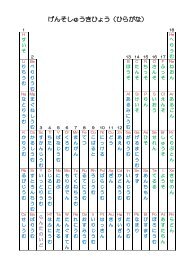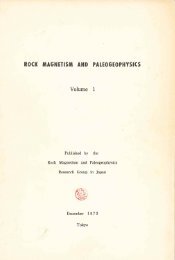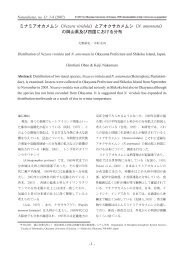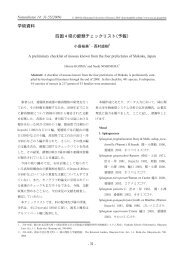You also want an ePaper? Increase the reach of your titles
YUMPU automatically turns print PDFs into web optimized ePapers that Google loves.
<strong>Python</strong> <strong>Tutorial</strong>, Release 2.6.2<br />
Degenerate slice indices are handled gracefully: an index that is too large is replaced by the string size, an upper<br />
bound smaller than the lower bound returns an empty string.<br />
>>> word[1:100]<br />
’elpA’<br />
>>> word[10:]<br />
’’<br />
>>> word[2:1]<br />
’’<br />
Indices may be negative numbers, to start counting from the right. For example:<br />
>>> word[-1] # The last character<br />
’A’<br />
>>> word[-2] # The last-but-one character<br />
’p’<br />
>>> word[-2:] # The last two characters<br />
’pA’<br />
>>> word[:-2] # Everything except the last two characters<br />
’Hel’<br />
But note that -0 is really the same as 0, so it does not count from the right!<br />
>>> word[-0] # (since -0 equals 0)<br />
’H’<br />
Out-of-range negative slice indices are truncated, but don’t try this for single-element (non-slice) indices:<br />
>>> word[-100:]<br />
’HelpA’<br />
>>> word[-10] # error<br />
Traceback (most recent call last):<br />
File "", line 1, in <br />
IndexError: string index out of range<br />
One way to remember how slices work is to think of the indices as pointing between characters, with the left edge<br />
of the first character numbered 0. Then the right edge of the last character of a string of n characters has index n,<br />
for example:<br />
+---+---+---+---+---+<br />
| H | e | l | p | A |<br />
+---+---+---+---+---+<br />
0 1 2 3 4 5<br />
-5 -4 -3 -2 -1<br />
The first row of numbers gives the position of the indices 0...5 in the string; the second row gives the corresponding<br />
negative indices. The slice from i to j consists of all characters between the edges labeled i and j, respectively.<br />
For non-negative indices, the length of a slice is the difference of the indices, if both are within bounds. For<br />
example, the length of word[1:3] is 2.<br />
The built-in function len() returns the length of a string:<br />
>>> s = ’supercalifragilisticexpialidocious’<br />
>>> len(s)<br />
34<br />
14 Chapter 3. An Informal Introduction to <strong>Python</strong>











